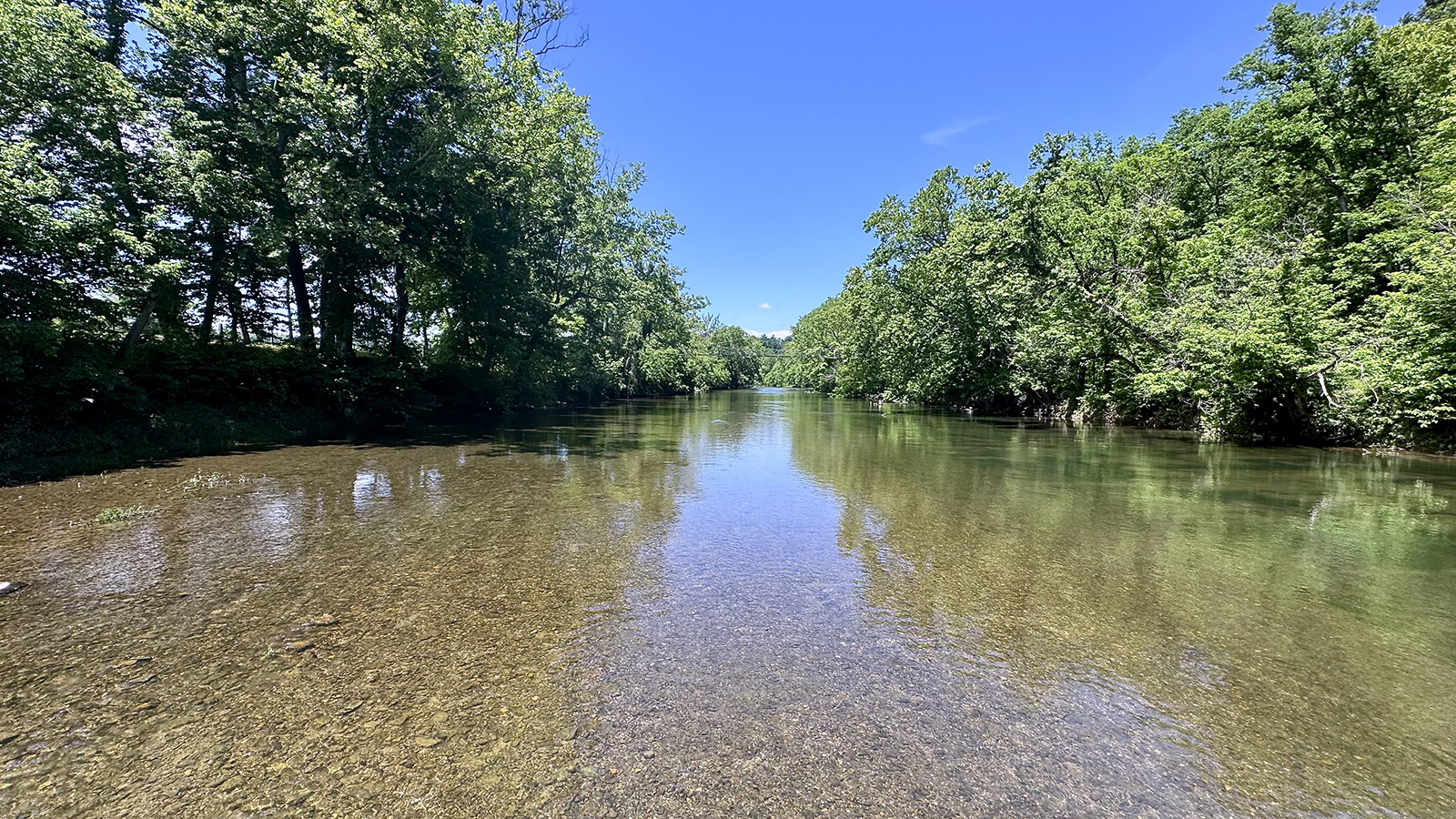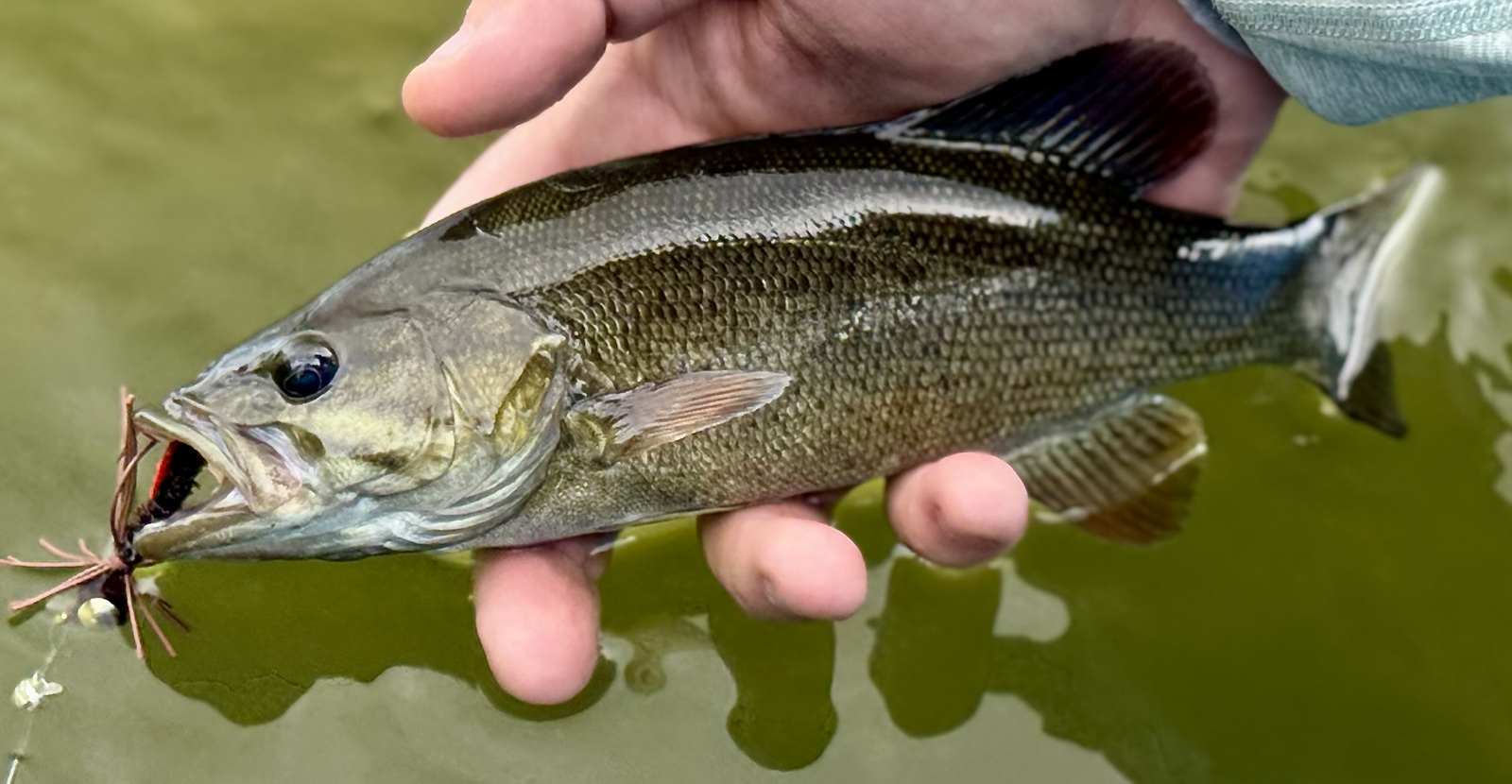Go To Virginia’s Five Best Lesser-Known Smallmouth Waters for great catches
- Virginia’s Five Best Lesser-Known Smallmouth Waters
By Dr. Peter Brookes
Photos by Dr. Peter Brookes
When folks talk about places to fish for Virginia’s stupendous smallmouth bass, you hear a lot of the same river names over and over again: the New, South Fork of the Shenandoah, the James, and the Rappahannock. Not that there’s anything wrong with that–these are great rivers for smallies (and other fish species).
Indeed, because of the likes of the New, ‘Doah, the Big Jim, and the Rapp–among other waters–Virginia is easily one of the top 10 smallmouth fishing states in the country; possibly even in the top five. That’s saying something when you’re up against the likes of the northern states that border the Great Lakes Basin.
But, there are a number of other rivers in the Old Dominion besides the Big Four that are definitely worthy of your smallmouth angling attention this year, especially as fishing for bronzebacks heats up with the weather.
If you’re new to smallie fishing, they’re a great game fish for a lot of reasons. These green-brown boulder beasts are aggressive, pull hard and often jump when hooked, aren’t too picky about flies, lures, or presentation, and are famous for their strikes on the water’s surface.

Smallies are a great choice for new anglers to target.
You won’t forget seeing the first time a smallie goes airborne to inhale some unsuspecting flying insect. The bronzeback’s willingness to play as well as the quantity and quality (i,e., 11-inch plus) of them across the Old Dominion make them a great fish for the novice fly fisher or conventional angling, beginning their lifetime of angling adventure.
With that in mind, here are five of the best of the less-celebrated waters for Virginia smallies that you may want to wet a line in this summer:
North Fork of the Shenandoah River
Everyone talks about smallie fishing on the South Fork of the Shenandoah River–and rightfully so, it’s a great fishery. But the North Fork is also worthy of attention for smallies. The North Fork in Shenandoah County holds good quantity and good quality bronzebacks, especially in the middle section near Woodstock and Edinburg and the lower section near Strasburg before it joins with the Main Stem near Front Royal.
The scenic North Fork, which meanders through the Northern Shenandoah Valley, offers riffle pool sequences, opportunities for wading and floating, and less pressure than its cousin on the opposite side of Massanutten Mountain, the South Fork. Possible smallmouth bycatches in the North Fork include: largemouth bass, channel catfish, panfish, or the occasional muskellunge (musky).

The North Fork Shenandoah River
Maury River
In Rockbridge County, the Maury receives clean, cold water from the mountains through Goshen Pass on a 40-mile run before disappearing into the mighty James River. The upper section is mostly a (stocked) brown and rainbow trout fishery. In the middle and lower sections, the water warms, creating ideal smallie habitat. The river also has lots of structure (e.g., ledges and boulders), which provide ample ambush points for these piscatorial predators.
Pressure on the Maury is lighter than on the Big Jim due to it’s less-celebrated status as a smallmouth waterway. It has both wadeable and floatable sections. (Spring is best for floating). Expect bronzebacks in the 7-13-inch range with numbers of quality fish increasing.
Not a smallie on your line in the Maury? It could be a panfish, rock bass, or carp; less likely, but possible, is a musky or flathead catfish.
Rivanna River
In Albemarle county, this river near Charlottesville is probably best known as a recreational waterway for tubing and kayaking. But this often-overlooked fishery offers good quantity and good quality smallmouth bass fishing. Designated Virginia’s first scenic river, the Rivanna–a shortened version of “River Anna,” named after an English Queen–flows for 40-plus miles before it disappears into the James River. It’s sometimes historically known as “Mr. (Thomas) Jefferson’s River.”
The Rivanna is known for its deep pools and rock gardens; it’s both floatable and wadeable with some convenient shoals for wading anglers. Expect the river to offer up lots of smallies in the 8-13 inch range with reports of an occasional trophy-size fish (i.e., 20-inches or 5-lbs.).
While angling the Rivanna, you might also hook into: largemouth bass, panfish, fallfish, crappie, rock bass, and channel cats.

A Rivanna River bronzeback.
Clinch River
Located in Southwest Virginia, the Clinch is considered one of the most biodiverse rivers in North America–and perhaps the world–with a large variety of aquatic life (e.g., mussels) and non-game fish species (e.g., darters and minnows). If that’s not enough, the Clinch also has more species of fish than any other Virginia river.
Mostly known as a top-notch tailwater trout fishery downstream in Tennessee, the Clinch offers deep pools and rocky runs for smallies on the Virginia side of the border. The one-time stomping grounds of Daniel Boone are scenic and offer low fishing pressure. The river has good fishing access, with wadeable and floatable sections. (Good news: It’s generally floatable all summer). The Clinch provides good quantity and good quality smallmouth bass fishing; expect smallies in the 10-16 inch range with an occasional citation-size fish.
Besides solid smallmouth fishing, smallie bycatches in the Clinch include musky, walleye (a native Virginia strain), rock bass, and panfish.
Rapidan River
A waterway usually known for its upper section in Shenandoah National Park that includes top-notch brook trout fishing and historic Camp Hoover, the lower Rapidan in Culpeper County offers excellent smallmouth fishing. The river is both floatable and wadeable, with good structure and clear water. This often passed-over warmwater fishery provides great sight-fishing opportunities for bronzebacks before it eventually dumps into the Rappahannock.
A trophy smallie is possible, but if the tug on your line isn’t a bronzeback in the Rapidan, it might be a largemouth, panfish, rock bass, fallfish, cat–or even a juvenile striped bass that has migrated up from the tidal reaches below Fredericksburg.
Other Virginia smallmouth rivers could have easily made this list such as the North Fork of the Holston, the Staunton, the Powell, the North Fork and South Fork of the Anna, Shenandoah Main Stem, and the lower Jackson River. The point is that Virginia has a lot of superb smallmouth bass fishing in big and small rivers across the state, so if you haven’t already gotten your Virginia freshwater fishing license, you can get it right now online here.
Overshadowed by bigger-name smallie rivers, these less-celebrated waterways offer not only great fishing, but because they’re often overlooked, they can put you on the fish while being away from the crowds. That’s what I call a dog days of summer good deal.
Dr. Peter Brookes is an award-winning, Virginia outdoor writer at Brookes Outdoors. Connect at Brookesoutdoors@aol.com.







